Alfred's Essentials of Music Theory
Complete Book Alto Clef (Viola) Edition
-
Ships in 24 hours
Details
Description
SKU: AP.18583
Complete Book Alto Clef (Viola) Edition. Composed by Andrew Surmani, Karen Farnum Surmani, and Morton Manus. NAMM Best in Show; Parents' Choice; Reference Textbooks; Textbook - General; Theory; iParenting Media Award. Essentials of Music Theory. Book. 124 pages. Alfred Music #00-18583. Published by Alfred Music (AP.18583).ISBN 9780739002650. UPC: 038081177458. English.
Alfred's Essentials of Music Theory is designed for students of any age, whether listeners or performers, who want to have a better understanding of the language of music. In this all-in-one theory course, you will learn the essentials of music through concise lessons, practice your music reading and writing skills in the exercises, improve your listening skills with the available ear-training CDs (sold separately), and test your knowledge with a review that completes each unit.
This Alto Clef edition includes primarily alto clef examples, but also presents treble and bass clef examples. The Student Complete Book includes Books 1-3 in a spiral-bound format. The comb binding creates a lay-flat book that is perfect for study and performance.
Book 1 (Lessons 1-25): Staff, Notes and Pitches * Treble & Bass Clefs * Grad Staff & Ledger Lines * Note Values * Measure, Bar Line and Double Bar * 2/4, 3/4 & 4/4 Time Signatures * Whole, Half & Quarter Notes/Rests * Dotted Half & Quarter Notes * Ties & Slurs * Repeat Sign, 1st & 2nd Endings * Eighth Notes & Rests * Dynamic Signs, Tempo Marks & Articulation * D.C., D.S., Coda & Fine * Flats, Sharps & Naturals * Whole & Half Step, Enharmonic Notes.
Book 2 (Lessons 25-50): Tetrachords & Major Scales * Key Signatures * Chromatic Scale * Intervals, Circle of Fifths * Perfect, Major & Minor Intervals * Augmented & Diminished Intervals * Solfège & Transposition * Sixteenth Notes & Rests * Dotted Eighth Notes & Eighth Note Triplets * Common Time & Cut Time * 3/8 & 6/8 Time Signatures * Pick-up Notes & Syncopation * Primary & Major Triads * Scale Degree Names * Dominant 7th Chord.
Book 3 (Lessons 51-75): 1st & 2nd Inversions of Triads * Inversions of V7 Chords * Figured Bass * Major Chord Progressions * Minor Scales, Minor Triads * Augmented & Diminished Triads * Primary Triads in Minor Keys * Minor Chord Progressions * Modes * Harmonizing a Melody in Major and Minor Keys * Broken Chords & Arpeggiat.
Song List (133)
- Unit 1
- Lesson 1: The Staff, Notes and Pitches
- Lesson 2: Treble Clef and Staff
- Lesson 3: Bass Clef and Staff
- Lesson 4: The Grand Staff and Ledger Lines (the middle notes)
- Lesson 5: Ledger Lines (low and high notes)
- Lesson 5b: Alto Clef and Staff
- Lesson 5c: Alto Clef Ledger Lines
- Ear Training for Lessons 1-5
- Review of Lessons 1-5
- Unit 2
- Lesson 6: Note Values
- Lesson 7: Measure, Bar Line and Double Bar
- Lesson 8: 4/4 Time Signature and Note Values
- Lesson 9: Whole, Half and Quarter Rests
- Ear Training for Lessons 6-9
- Review of Lessons 6-9
- Unit 3
- Lesson 10: 2/4 Time Signature
- Lesson 11: 3/4 Time Signature
- Lesson 12: Dotted Half Note
- Lesson 13: Ties and Slurs
- Ear Training for Lessons 10-13
- Review of Lessons 10-13
- Unit 4
- Lesson 14: Repeat Sign, 1st and 2nd Endings
- Lesson 15: Eighth Notes
- Lesson 16: Eighth Rests
- Lesson 17: Dotted Quarter Note
- Ear Training for Lesson 14-17
- Review of Lessons 14-17
- Unit 5
- Lesson 18: Dynamic Signs
- Lesson 19: Tempo Marks
- Lesson 20: Articulation
- Lesson 21: D.C., D.S., Coda and Fine
- Ear Training for Lessons 18-21
- Review of Lessons 18-21
- Unit 6
- Lesson 22: Flats
- Lesson 23: Sharps
- Lesson 24: Naturals
- Lesson 25: Whole Steps, Half Steps and Enharmonic Notes
- Ear Training for Lessons 22-25
- Review of Lessons 22-25
- Appendix
- Glossary & Index of Terms & Symbols
- Unit 7
- Lesson 26: Tetrachords and Major Scales
- Lesson 27: The Sharp Scales---G and D Major
- Lesson 28: The Flat Scales---F and B-flat Major
- Lesson 29: Key Signatures---The Sharp Keys
- Lesson 30: Key Signatures---The Flat Keys
- Ear Training for Lessons 26-30
- Review of Lessons 26-30
- Unit 8
- Lesson 32: The Remaining Major Scales with Key Signatures
- Lesson 32: Chromatic Scale
- Lesson 33: Intervals
- Lesson 34: Circle of Fifths
- Ear Training for Lessons 31-34
- Review of Lessons 31-34
- Unit 9
- Lesson 35: Perfect and Major Intervals
- Lesson 36: Minor Intervals
- Lesson 37: Augmented and Diminished Intervals
- Lesson 38: Solfege and Transposition
- Ear Training for Lessons 35-38
- Review of Lessons 35-38
- Unit 10
- Lesson 39: Sixteenth Notes
- Lesson 40: Sixteenth Rests
- Lesson 41: Dotted Eighth Notes
- Lesson 42: Common Time and Cut Time (Alla Breve)
- Ear Training for Lessons 39-42
- Review of Lessons 39-42
- Unit 11
- Lesson 43: 3/8 and 6/8 Time Signatures
- Lesson 44: 3/8 and 6/8 Time Signatures at Fast Tempos
- Lesson 45: Eighth Note Triplets
- Lesson 46: Incomplete Measures (Pick-up Notes) and Syncopation
- Ear Training for Lessons 43-46
- Review of Lessons 43-46
- Unit 12
- Lesson 47: Triads
- Lesson 48: Primary and Major Triads
- Lesson 49: Scale Degree Names
- Lesson 50: The V-7 (Dominant 7th) Chord
- Ear Training for Lessons 47-50
- Review of Lessons 47-50
- Unit 13
- Lesson 51: Triads---1st Inversion
- Lesson 52: Triads---2nd Inversion
- Lesson 53: V-7 Chords---1st, 2nd and 3rd Inversions
- Lesson 54: Figured Bass
- Lesson 55: Major Chord Progressions
- Ear Training for Lessons 51-55
- Review of Lessons 51-55
- Unit 14
- Lesson 56: Minor Scales
- Lesson 57: Natural, Harmonic and Melodic Minor Scales
- Lesson 58: Minor Triads
- Lesson 59: Augmented and Diminished Triads
- Ear Training for Lessons 56-59
- Review of Lessons 56-59
- Unit 15
- Lesson 60: The Primary Triads in Minor Keys
- Lesson 61: Minor Chord Progressions
- Lesson 62: Modes Related to the Major Scale: Ionian, Mixolydian, and Lydian
- Lesson 63: Modes Related to the Minor Scale: Aeolian, Dorian, Phrygian, Locrian
- Ear Training for Lessons 60-63
- Review of Lessons 60-63
- Unit 16
- Lesson 64: Harmonizing a Melody in a Major Key
- Lesson 65: Broken Chords and Arpeggiated Accompaniments
- Lesson 66: Passing and Neighboring Tones
- Lesson 67: Composing a Melody in a Major Key
- Ear Training for Lessons 64-67
- Review of Lessons 64-67
- Unit 17
- Lesson 68: Harmonizing a Melody in a Minor Key
- Lesson 69: Composing a Melody in a Minor Key
- Lesson 70: 12-Bar Blues Chord Progression
- Lesson 71: The Blues Scale
- Ear Training for Lessons 68-71
- Review of Lessons 68-71
- Unit 18
- Lesson 72: Basic Forms of Music---Motive and Phrase
- Lesson 73: AB (Binary) Form
- Lesson 74: ABA (Ternary) Form
- Lesson 75: Rondo Form
- Ear Training for Lessons 72-75
- Review of Lessons 72-75
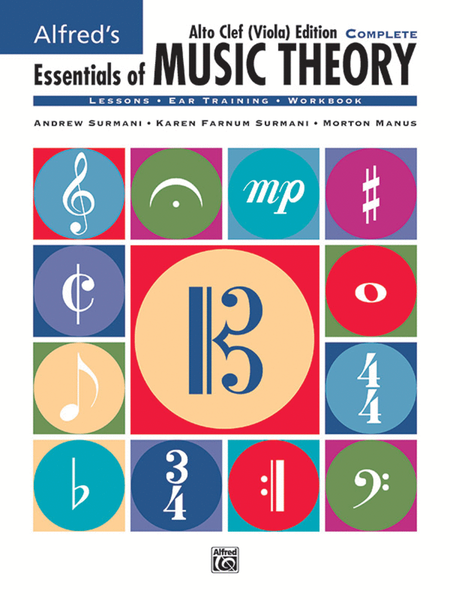
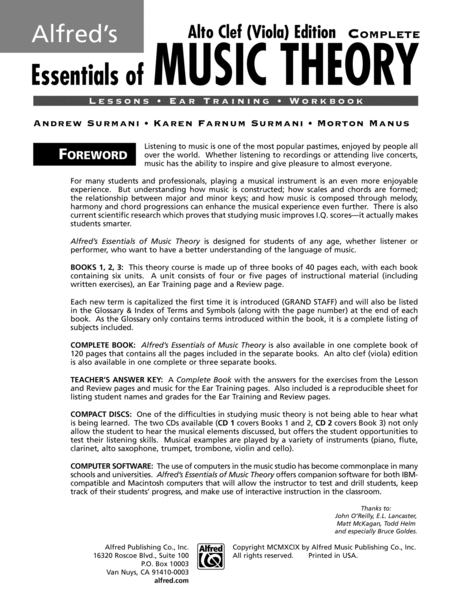
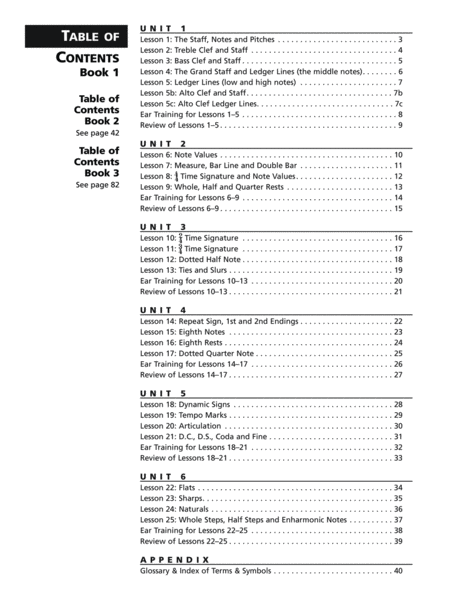
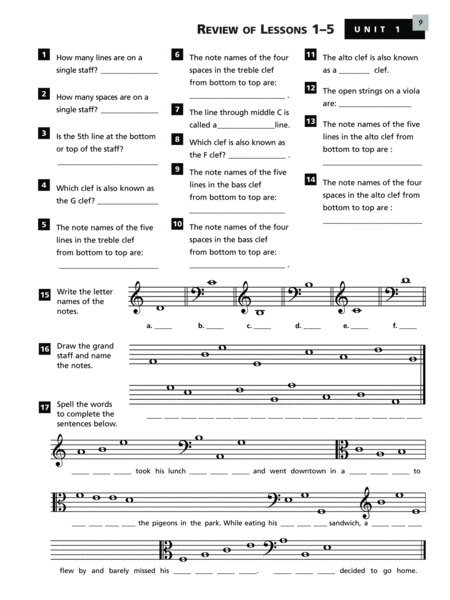
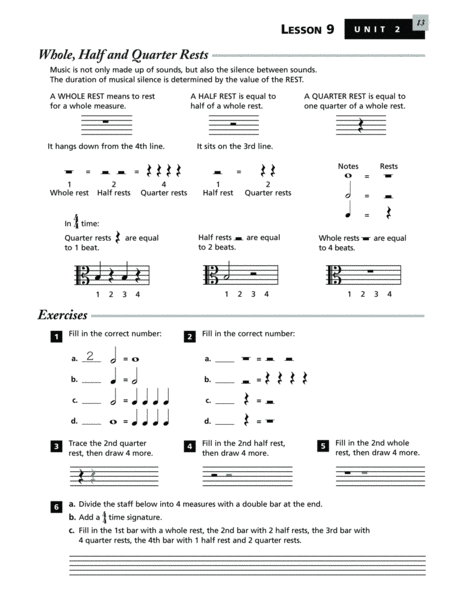
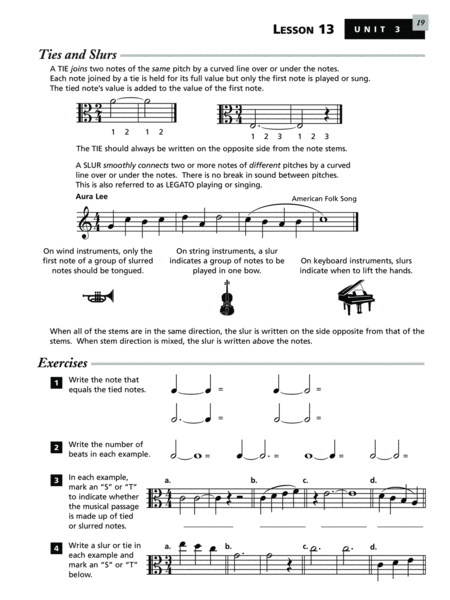
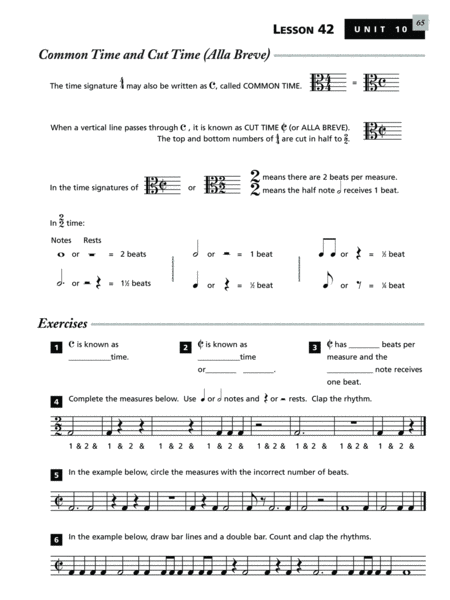
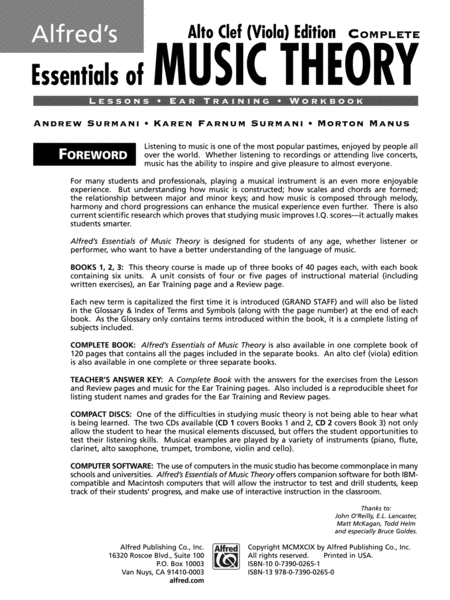
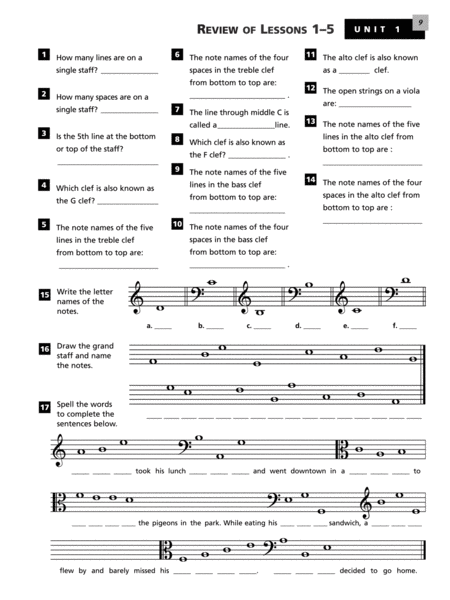
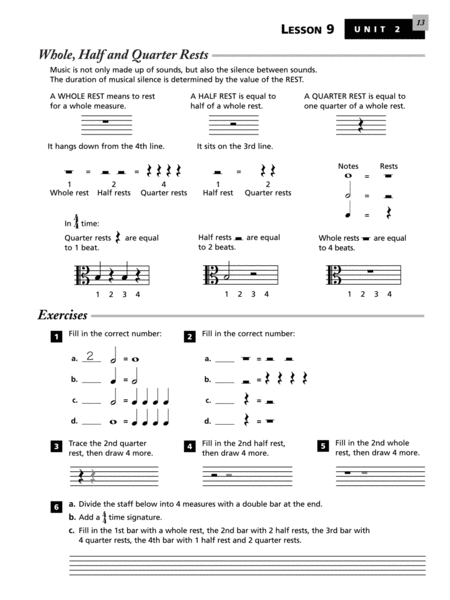
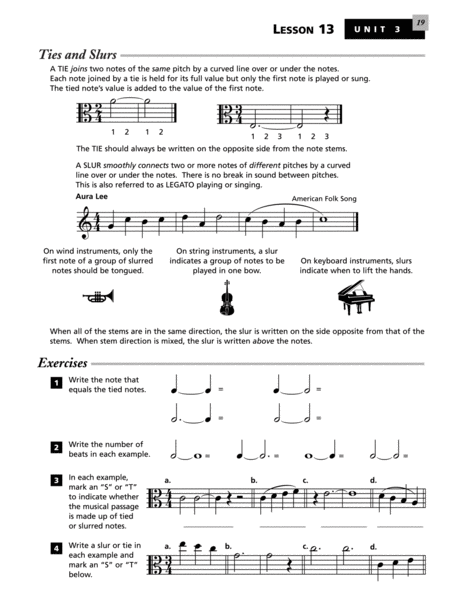
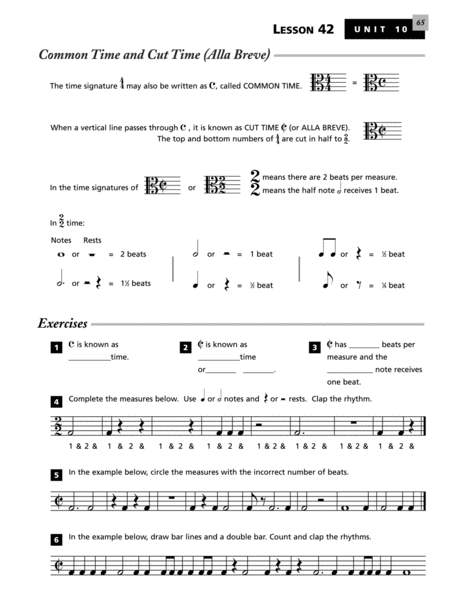
 Share
Share